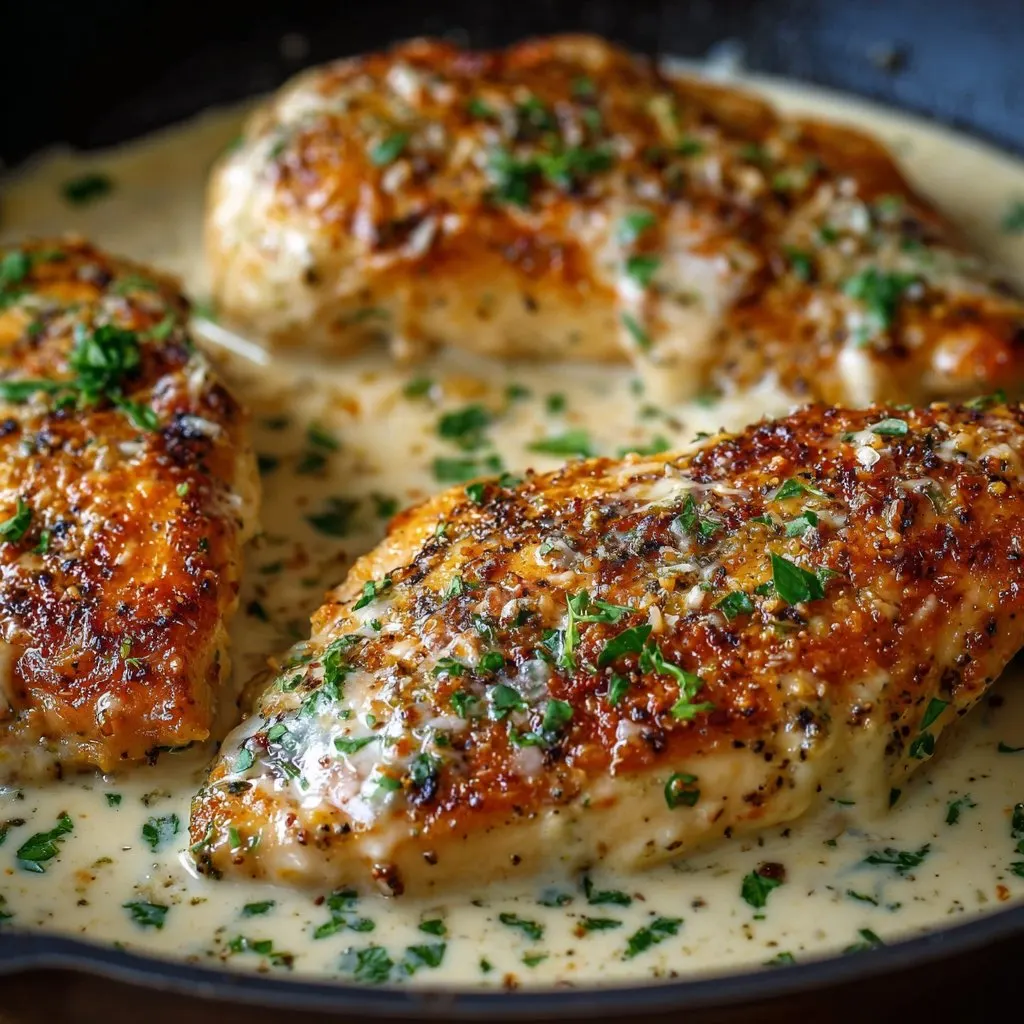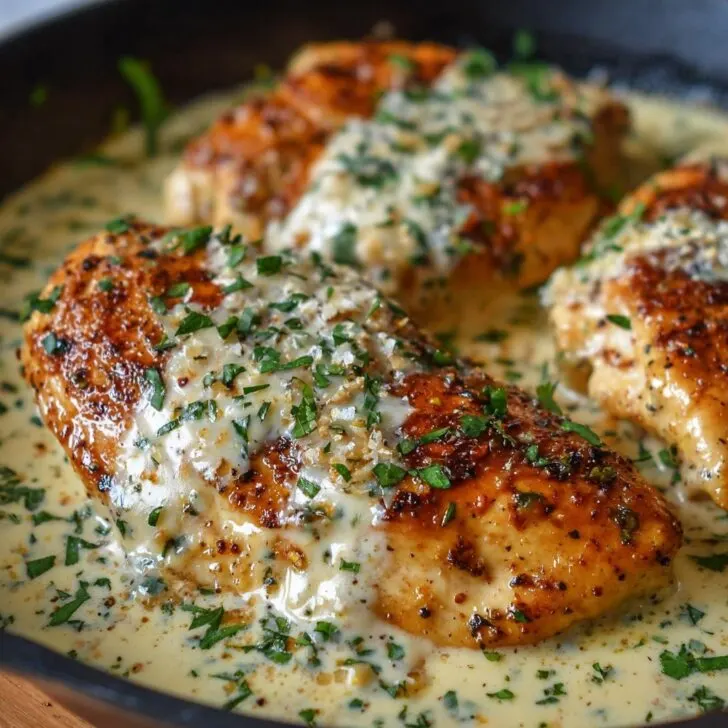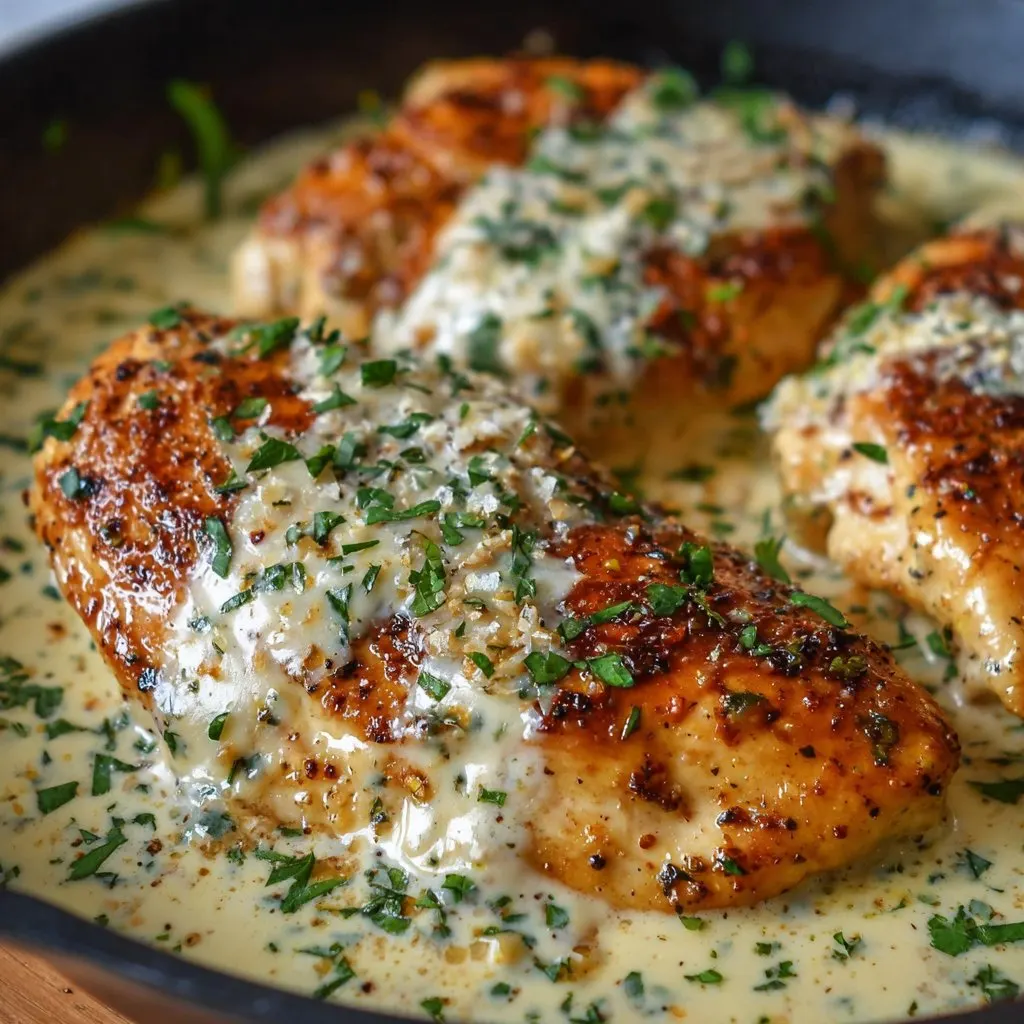So, Let’s Talk About Creamy Garlic Parmesan Chicken
Alright, friend, pull up a chair—because if you're after a seriously comforting dinner, I've got something for you. This is the Best Creamy Garlic Parmesan Chicken recipe I keep in my back pocket for those totally chaotic evenings when I want something guaranteed to get my lot around the table. Quick random memory: I once tried to make this dish for a date night, but accidentally poured in double the garlic. It’s now kind of an inside joke at home. But honestly, nobody complained—well, except maybe my breath. True love, I suppose?
Why This Chicken is Worth Your Time
I make this dish when the weather turns grey (I’m in the UK, so...most of the time), or when I forget to defrost anything fancy. My family goes absolutely bonkers for this sauce; they nearly lick the plates clean. It’s one of those meals that makes even leftover bits of broccoli disappear—somehow! Honestly, I used to dread pan-searing chicken (it’d always stick, ugh) but now I just go with it—even if it’s not picture perfect, the sauce saves the day.
What You Actually Need (And What to Swap)
- 4 boneless skinless chicken breasts (thighs work, too—some days I can’t be bothered to trim them though)
- 2 tablespoons flour for dredging (or cornstarch if you’re keeping it gluten-free, but don’t stress—skip this step and it still turns out)
- 2 tablespoons olive oil (I’ve even used butter when I was low on oil)
- 1 to 2 heaping tablespoons minced garlic (fresh is best, but the lazy jar stuff is fine; I won’t judge)
- 1 cup chicken stock (the cubes are alright, although I once tried beef stock—long story, don’t do it)
- 1 cup double cream (sometimes I do half cream and half milk if it’s nearly payday)
- ¾ cup grated Parmesan (My grandmother always insisted on Parmigiano-Reggiano, but honestly, that pre-shredded bag is a lifesaver)
- Salt & cracked black pepper to taste
- A handful fresh parsley (only if I remember—it’s more for vibes than flavor, really)
Note: If you’re missing one or two things, I’d say still go for it. Honestly, this is the most forgiving chicken recipe I know.
Here’s How You Actually Cook It
- Tidy your worktop, otherwise you’ll be juggling spatulas (trust me).
- Pat the chicken dry. Dredge in the flour (or not—once I skipped it and the sauce was still dreamy, just a bit thinner).
- Heat olive oil in a big frying pan on mediumish heat. Brown the chicken 4-5 mins a side. Yes, it will splatter—just dodge.
- Move the chicken to a plate temporarily (don’t worry if it’s slightly pink inside, the next step sorts that).
- Toss the garlic into the same pan. Sizzle for about a minute—don’t let it go brown; learned that the hard way.
- Pour in the chicken stock, scraping the pan to loosen up all the yummy bits stuck on the bottom. This is where I usually sneak a taste and panic about salt, only to realize the Parmesan sorts it.
- Drop down the heat and swirl in the cream, stirring. Don’t worry if it looks a bit weird at first – after a minute or two it’ll come together.
- Add the Parmesan in handfuls, stirring until it’s all melted and glorious. Plop the chicken back in, spoon sauce over, and let simmer gently until cooked through (about 5-8 mins, depending on size).
- Season to taste. Scatter that parsley, snap a quick photo if you’re inclined, and get it to the table, quick!
Some Notes from the Trenches
- If you overcook the sauce it goes a bit grainy, but honestly, nobody’s ever complained to me.
- I once made it with Greek yogurt instead of cream—result: much tangier and not for everyone, but if you’re curious, give it a whirl.
- Oh, and don’t stress if your Parmesan gets clumpy; whisk like mad, and it’ll sort itself out, mostly.
How I’ve Messed with This Recipe (Good & Bad)
- Added spinach a few times (baby spinach works best, but sometimes mature leaves are what’s at hand—go for it).
- Tried sun-dried tomatoes…probably not again. Too sweet for me—but hey, might be your jam.
- I also swapped in smoked paprika once for a little warmth, and yes, it’s oddly addictive.
- One time I threw in mushrooms, which was fabulous—just brown them after the chicken.
Equipment (And My Cheeky Workarounds)
- Big skillet or frying pan (a wok works in a pinch, though the sauce gets a bit runny at the edges)
- Sharp knife—though I’ve been known to wrangle chicken with kitchen scissors when I couldn’t face washing another knife
- Spatula or a wooden spoon
- Chopping board (any clean surface, if you’re desperate...)

How to Store (Not That It’ll Last...)
Technically, you can stash leftovers in an airtight tub in the fridge for 2-3 days. But, in my house, it never lasts more than a day! If you reheat, low and slow is best, or the sauce can split. I think the flavors mellow even better the next day, actually. Freezing is possible but honestly I avoid it—cream sauces just go a bit odd when thawed.
What to Serve On The Side
This chicken just cries out for something to soak up the sauce—my crew loves it over buttery mash, but pasta or fluffy rice are dead simple, too. Once a month I serve it with steamed peas (nobody’s thrilled, but it balances things out). And occasionally, if I'm feeling particularly fancy, I bring out a crusty baguette—perfect for serious sauce-mopping.
Pro Tips (Learned The Hard Way)
- I once tried rushing the simmer step, and all I got was weird, rubbery chicken. Slow and steady, friend—it’s worth it.
- It’s tempting to dump in all the Parmesan at once. Don’t. Seriously. It melts better in batches—I can’t explain the science, but it works.
- This sauce thickens as it cools, so serve it up quick if you like it silky. Or just thin it with a little stock/milk (done that loads of times).
Your Most Burning (and Random) Questions—Answered
- Can I make this dairy-free?
Okay, folks keep asking. You can try coconut cream, but it does change the flavor. I’ve not tracked down the perfect non-dairy Parmesan, but if you have—let me know! - What if I mess up the sauce?
Happens to the best of us. Just whisk more, maybe add a splash of milk if needed. Or pretend it’s meant to be more rustic (works for me). - Can I use pre-cooked chicken?
Yeah, actually; just warm it in the sauce. Flavor’s not as deep, but hey—some nights are just about survival, right? - Where can I get good Parmesan?
If you’re curious, Serious Eats has a great cheese guide. And for kitchen gear, The Kitchn gives some cracking skillet advice. - Why is my chicken dry?
I’ll be honest—I’ve done this. Probably overcooked. Make sure you bring it out while just cooked through, the sauce takes care of the rest.
If you actually made it to the end of this ramble—cheers! And if you try it, let me know if your family starts fighting over the last spoonful, as mine do. The washing up is not included in this recipe, by the way. Good luck!
Ingredients
- 4 boneless, skinless chicken breasts
- 1 tablespoon olive oil
- 3 cloves garlic, minced
- 1 cup heavy cream
- ½ cup grated Parmesan cheese
- 1 teaspoon Italian seasoning
- Salt and freshly ground black pepper, to taste
- 2 tablespoons chopped fresh parsley
Instructions
-
1Season the chicken breasts with salt, pepper, and Italian seasoning on both sides.
-
2Heat olive oil in a large skillet over medium-high heat. Add the chicken and cook for 5-6 minutes per side until golden and cooked through. Transfer to a plate and keep warm.
-
3In the same skillet, add the minced garlic and sauté for about 1 minute until fragrant.
-
4Reduce heat to medium, pour in the heavy cream, and stir in the Parmesan cheese. Cook, stirring frequently, until the sauce thickens, about 3-5 minutes.
-
5Return the chicken to the skillet, spoon the creamy garlic Parmesan sauce over the chicken, and simmer for 2-3 minutes.
-
6Garnish with chopped fresh parsley and serve immediately.
Approximate Information for One Serving
Nutrition Disclaimers
Number of total servings shown is approximate. Actual number of servings will depend on your preferred portion sizes.
Nutritional values shown are general guidelines and reflect information for 1 serving using the ingredients listed, not including any optional ingredients. Actual macros may vary slightly depending on specific brands and types of ingredients used.
To determine the weight of one serving, prepare the recipe as instructed. Weigh the finished recipe, then divide the weight of the finished recipe (not including the weight of the container the food is in) by the desired number of servings. Result will be the weight of one serving.
Did you make this recipe?
Please consider Pinning it!!


